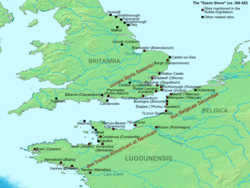This article needs additional citations for verification .(February 2020) |
| Years |
|---|
| Millennium |
| 1st millennium |
| Centuries |
| Decades |
| Years |
| 290 by topic |
|---|
| Leaders |
| Categories |
| Gregorian calendar | 290 CCXC |
| Ab urbe condita | 1043 |
| Assyrian calendar | 5040 |
| Balinese saka calendar | 211–212 |
| Bengali calendar | −304 – −303 |
| Berber calendar | 1240 |
| Buddhist calendar | 834 |
| Burmese calendar | −348 |
| Byzantine calendar | 5798–5799 |
| Chinese calendar | 己酉年 (Earth Rooster) 2987 or 2780 — to — 庚戌年 (Metal Dog) 2988 or 2781 |
| Coptic calendar | 6–7 |
| Discordian calendar | 1456 |
| Ethiopian calendar | 282–283 |
| Hebrew calendar | 4050–4051 |
| Hindu calendars | |
| - Vikram Samvat | 346–347 |
| - Shaka Samvat | 211–212 |
| - Kali Yuga | 3390–3391 |
| Holocene calendar | 10290 |
| Iranian calendar | 332 BP – 331 BP |
| Islamic calendar | 342 BH – 341 BH |
| Javanese calendar | 170–171 |
| Julian calendar | 290 CCXC |
| Korean calendar | 2623 |
| Minguo calendar | 1622 before ROC 民前1622年 |
| Nanakshahi calendar | −1178 |
| Seleucid era | 601/602 AG |
| Thai solar calendar | 832–833 |
| Tibetan calendar | ས་མོ་བྱ་ལོ་ (female Earth-Bird) 416 or 35 or −737 — to — ལྕགས་ཕོ་ཁྱི་ལོ་ (male Iron-Dog) 417 or 36 or −736 |

Year 290 ( CCXC ) was a common year starting on Wednesday of the Julian calendar. In the Roman Empire, it was known as the Year of the Consulship of Valerius and Valerius (or, less frequently, year 1043 Ab urbe condita ). The denomination 290 for this year has been used since the early medieval period, when the Anno Domini calendar era became the prevalent method in Europe for naming years.